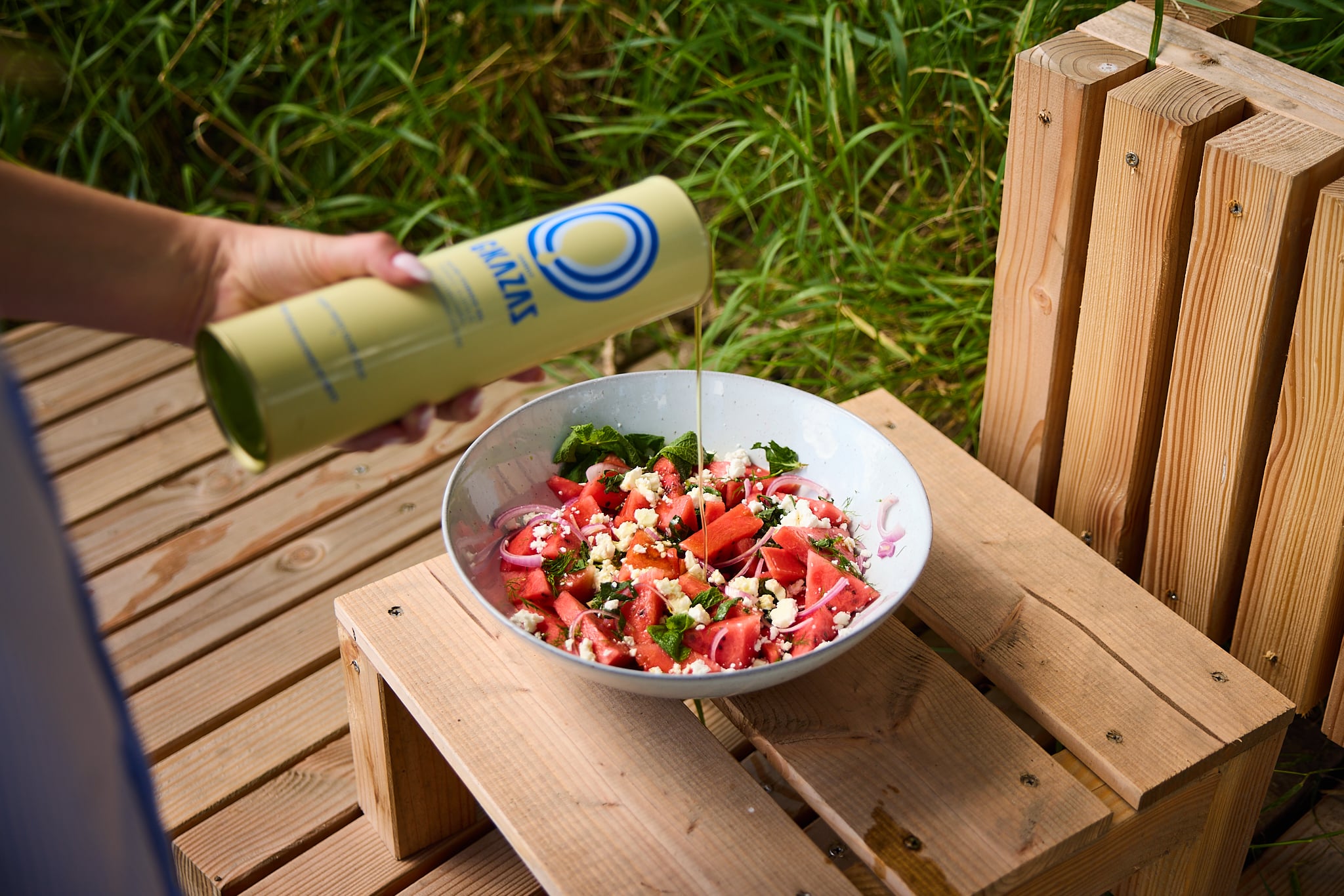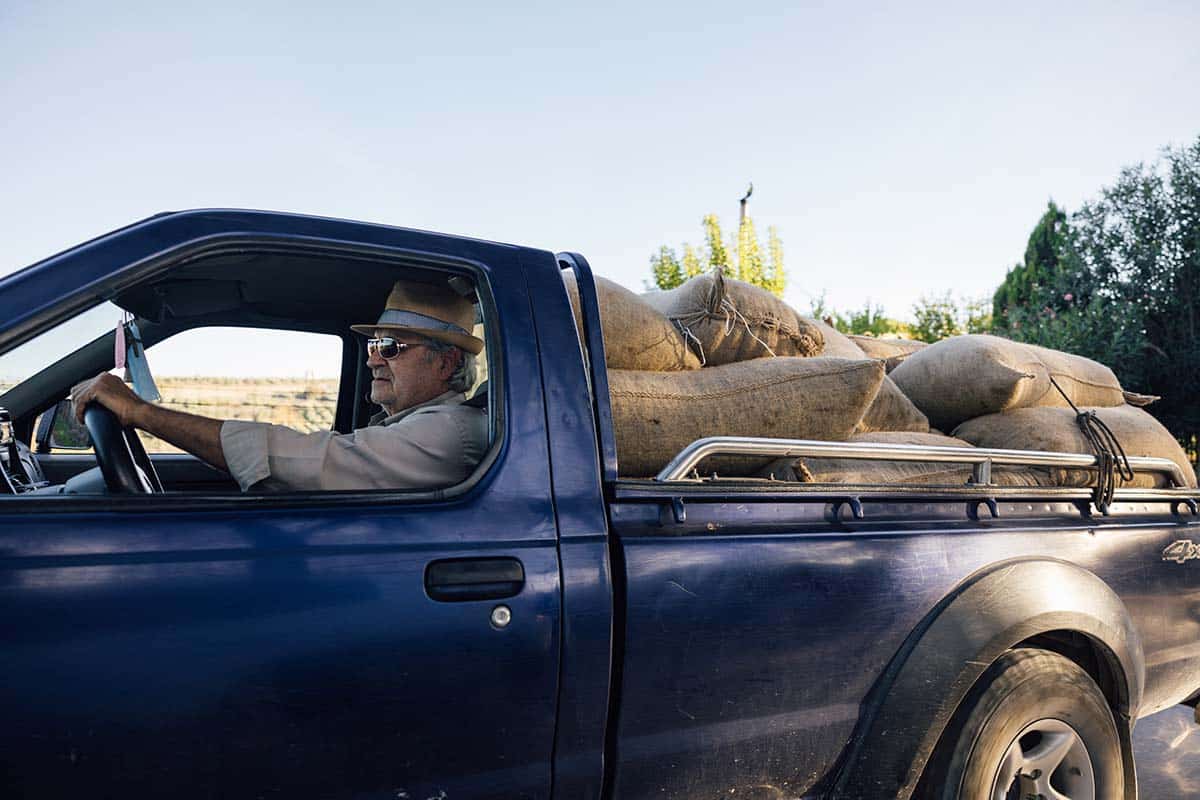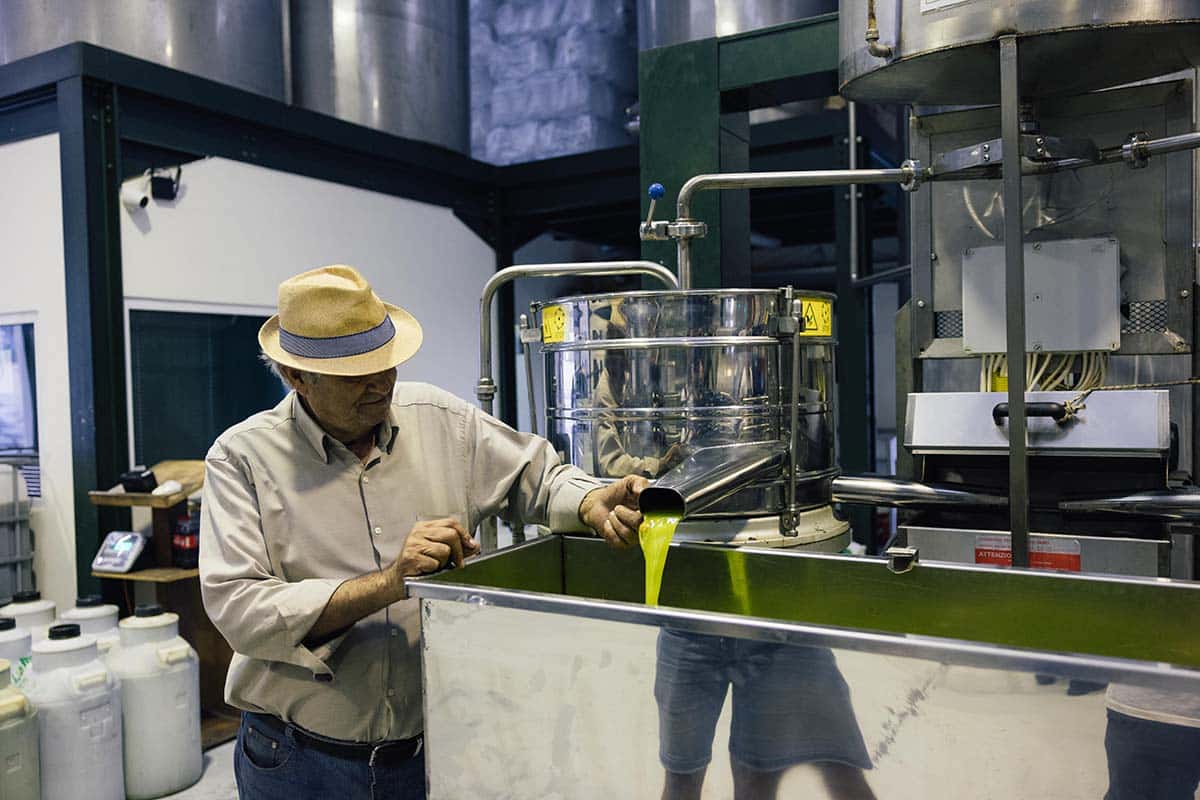There are many different pomace olive oils out there. Even we sometimes can’t see the forest for the trees. But what makes a good pomace olive oil? We’ll help you answer that question by looking at a few key factors.
A quick reminder: what is pomace olive oil?
Did you know there are four types of olive oil suitable for consumption? These include olive oil, blended refined olive oil, pomace olive oil, and non-edible olive oil. Pomace olive oil is one of them. You can find an in-depth article on the types of olive oil here.
Pomace olive oil is made from olive pulp. After pressing our (organic) extra virgin olive oil, fresh pulp remains. Through different production methods, this pulp is turned into pomace olive oil. This way, nothing from the original olive goes to waste — beautiful, right? You can read more about what pomace olive oil is here.

Want to know a bit more about the production process? Here you go: by heating the pulp, we extract raw pomace olive oil. This is then filtered and steamed — completely 100% natural! To enhance the taste and nutritional value of pomace olive oil, extra virgin olive oil is added. Find more details about how pomace olive oil is made.
What makes a good pomace olive oil?
Now you know what pomace olive oil is and how it’s made. But what defines a good pomace olive oil? That depends on the choices made during its production. We’ll explain by showing how we make pomace olive oil the best way — and what more “efficient” (and cheaper) but lower-quality alternatives are.
First, the olives you press. There are countless factors that influence olive quality. You can read more about the best olive oil and these influencing factors. Think, for example, whether the olives are organically grown like ours, where the trees are located, the biodiversity of the grove, and when the harvest takes place.

Next, you look at how the olives are pressed. When you press them the same day they are harvested, using a traditional method, the resulting oil is of the highest quality. The longer you wait, the lower the oil quality.
Then comes the pomace olive oil production process — in our opinion, the most important point. We make pomace olive oil by heating the pulp to 60°C and refining it naturally. However, many pomace oils are refined using hexane — a chemical solvent that is not suitable for consumption. As far as we’re concerned, you absolutely don’t want that in your pomace olive oil.
Finally, look at the (extra virgin) olive oil added to the pomace oil to give it more flavor and nutrients. We use organic extra virgin olive oil, which is the best type of olive oil. Other brands might use lower-quality olive oil, meaning less taste and fewer nutrients. Want to know more about whether pomace olive oil is healthy?

So, the conclusion?
What is good pomace olive oil? As you can see, there are many factors that influence this. So how do you figure it all out? In our opinion, there’s only one way: by knowing the producers and trusting them. In short: buy from a local farmer, or from a producer like Gkazas Olive Oil that is open and transparent about the entire production process.
Want to learn more about pomace olive oil? Read our articles on cooking with pomace olive oil, is pomace olive oil healthy, and pomace olive oil vs sunflower or canola oil. Wondering where to buy our pomace olive oil? You can now find us at Albert Heijn! Available in a 1-liter pomace olive oil can or a 5-liter pomace olive oil can in our online store.
You can also read more about Greek olive oil, extra virgin olive oil, and organic olive oil. You’re welcome!
















